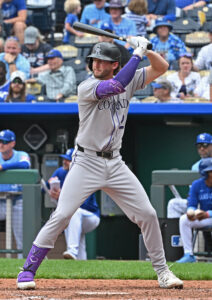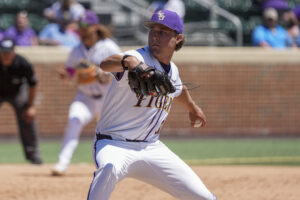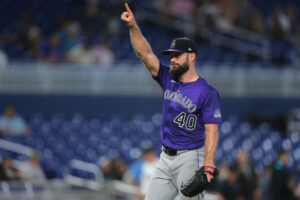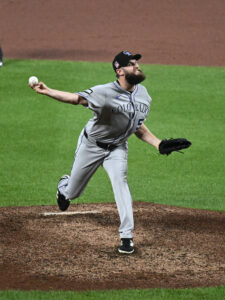The trade deadline has come and gone. While trade season was slow to get started this year, when all was said and done, there were several dozen trades made in a flurry of movement over the final few days before the deadline arrived. The full impact of these trades won’t be known for years to come, but that doesn’t meant we can’t analyze the deals and decide whose haul looks the best right now. Over the next week-plus, MLBTR will be running a series of polls asking which club in each division had the best deadline. So far, the
Phillies and
Reds have each come out on top in their respective divisions. Today, we’ll be rounding out the National League with a review of the NL West. A look at each of the five clubs, listed from best to worst record in 2025:
Los Angeles Dodgers
The Dodgers are, predictably, one of the best teams in the National League this year. They aren’t quite as overwhelming as some expected them to be, however, and that left them with some work to do ahead of the stretch run. Despite the holes in the club’s roster, however, L.A.’s deadline was a surprisingly quiet one where they did as much selling as they did buying.
Dustin May was shipped to Boston for a pair of prospects headlined by 2024 first-rounder
James Tibbs, and they downgraded from
Hunter Feduccia to
Ben Rortvedt for the club’s third catcher in order to bring in rookie reliever
Paul Gervase and A-ball prospect
Adam Serwinowski.
In terms of buy-side moves, they swapped depth outfielder
James Outman to the Twins in order to bring
Brock Stewart back home to the Dodgers’ pen. They followed that up by replacing Outman on the depth chart with a right-handed complement to
Michael Conforto in the form of
Alex Call. L.A.’s moves were strong ones on paper. They gave up very little meaningful talent in order to make a couple of legitimate improvements to their bullpen and bench mix, and it’s easy to see them emerging as the clear winners of the two sell-side trades they did make. Still, this summer could wind up feeling like a missed opportunity for the Dodgers given the lack of impact talent acquired—especially if they wind up getting chased down in the NL West by their rival 100 miles to the south.
San Diego Padres
No front office executive in the league operates quite like Padres GM A.J. Preller, and that frenetic aggressiveness was on full display on the day of this year’s trade deadline. San Diego completed five trades in the final seven hours before the deadline. The first one was the biggest, as they swapped a massive package headlined by consensus top-5 prospect
Leo De Vries to the Athletics in exchange for superstar closer
Mason Miller and lefty starter
JP Sears.
They didn’t stop there, however. Outfielder
Brandon Lockridge was surrendered to land
Nestor Cortes from the Brewers (alongside prospect
Jorge Quintana), and Preller immediately replaced Lockridge in the outfield by picking up both
Ramon Laureano and
Ryan O’Hearn from the Orioles. The acquisitions of Sears and Cortes created enough starting pitching depth that the Friars could move
Stephen Kolek and
Ryan Bergert to add
Freddy Fermin behind the plate, and for good measure San Diego rounded out its deadline by upgrading the infield with a controllable young talent in
Will Wagner.
It was a massive flurry of moves that should substantially improve the Padres in the near-term, but the cost was heavy. Prospects of De Vries’ caliber rarely get moved for a reason. Even aside from the risk that they’ve traded the league’s next superstar, they also surrendered some important depth in Kolek and Bergert, not to mention a huge chunk of their 2024 draft class. Preller’s win-now aggression allowed his club to improve its odds of winning the World Series this year more than any other team. But was the cost too great?
San Francisco Giants
Despite a strong start to the season and the aggressive decision to swing a deal with the Red Sox for
Rafael Devers back in June, the Giants have mostly fallen out of the postseason race and now have a 58-57 record. That led the club to pivot towards selling at the deadline, and they brought back an impressive haul of talent in doing so. A trade of pending free agent
Tyler Rogers to the Mets brought back a trio of well-regarded talents nearing or already in the big leagues: Triple-A outfielder
Drew Gilbert, rookie starter
Blade Tidwell, and young MLB reliever
Jose Butto. They also landed A-ball starter
Yunior Marte for rental outfielder
Mike Yastrzemski despite his down 2025 campaign.
Impressive as those deals were, the package they received for
Camilo Doval was somewhat light. That deal was led by catching/infield prospect
Jesus Rodriguez and Double-A starter
Trystan Vrieling. The return for Rogers and Yastrzemski was phenomenal, as the Giants acquired their #12, #13, and #25 prospects (per
MLB Pipeline) along with Butto for aging veterans on expiring contracts. Parting with Doval for two-plus seasons in exchange for a package headlined by the club’s #16 prospect, according to Pipeline, puts a bit of a damper on the club’s deadline, but it was still a strong infusion of talent to the upper levels of San Francisco’s minor league system and should result in better days for the Giants in the future.
Arizona Diamondbacks
The Diamondbacks teetered on the edge of buying and selling for most of July but kicked off trade season by dealing
Josh Naylor to the Mariners and never looked back. The club executed four trades that brought back players in return and a fifth that saw them deal
Shelby Miller to the Brewers in exchange for Milwaukee taking on a portion of
Jordan Montgomery’s contract. Big league ready talent and pitching prospects were the focus for Arizona this summer, and they mostly accomplished that goal of bolstering those parts of the organization.
Eugenio Suarez brought back a potential first baseman of the future in
Tyler Locklear as well as rookie reliever
Juan Burgos.
Randal Grichuk and Naylor also both brought back rookie relief arms in
Andrew Hoffmann and
Brandyn Garcia, giving the club a number of big league ready relief arms who can help fill out the bullpen next year.
Between the trades of Suarez, Naylor, and
Merrill Kelly, the Diamondbacks also picked up five pitching prospects who have yet to make their big league debut.
Kohl Drake (#7 in Arizona’s system at
MLB Pipeline) leads that group, which also includes
Mitch Bratt (#10),
David Hagaman (#14),
Ashton Izzi (#15), and
Hunter Cranton (#23). Locklear (#6) and Garcia (#20) also rank within the top 30, meaning that nearly a quarter of the club’s top 30 prospects were acquired at this deadline. As solid as those moves were, some view the return for Suarez as too light, and there’s reason to question why the team held onto
Zac Gallen rather than bringing back additional prospects and salary relief by letting him go. Even without Gallen moving, however, the Diamondbacks breathed new life into their farm system and saved a considerable amount of money that can be repurposed for the 2026 campaign come the offseason.
Colorado Rockies
Perhaps the most notable thing about Colorado’s deadline this year is that they did anything at all, given their years of relative inaction and refusal to part with veteran talents. The club made just three trades this summer, but the deals they did make were notable ones.
Ryan McMahon and
Jake Bird were traded to the Yankees for lefty
Griffin Herring (#5 in the Rockies’ system at
MLB Pipeline), second baseman
Roc Riggio (#11), righty
Josh Grosz (#19), and lefty
Ben Shields (#27).
Their third deal was a smaller one, as the club dealt struggling reliever
Tyler Kinley to the Braves in exchange for Double-A reliever
Austin Smith. It wasn’t the flashiest deadline for Colorado, but the return in exchange for McMahon was strong and the activity should help prop up one of the weakest farm systems in the majors as the Rockies toil through the worst season in franchise history.
With the exception of the Dodgers, the NL West was busier than usual this summer. San Diego did enough buying for the entire division, while the Giants, Diamondbacks, and Rockies each made some savvy sell-side moves. L.A. stands out from the crowd for their quiet approach to the deadline as they did some light buying to address areas of need and also managed to sneak in some light selling to take advantage of areas of depth. Which team did the best of this quintet? Have your say in the poll below:
Take Our Poll
